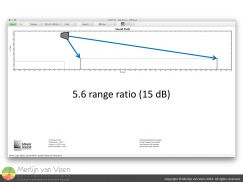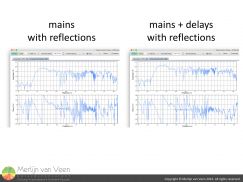 figure 1An article in response to a series of ProSoundWeb forum posts questioning the necessity of delay speakers.
figure 1An article in response to a series of ProSoundWeb forum posts questioning the necessity of delay speakers.
The default argument in favor of delay speakers appears to be level restoration. The default objections are timing issues and sonic perspective distortion.
This article attempts to explore some serious but often overlooked advantages of delay speakers beyond plain level restoration.
The venue is this example originates from an actual PSW post and is a small house of worship (figure 1). The original poster was looking for feedback from the forum members regarding the best approach for designing a suitable sound system with limited means.
A stereo approach was quickly discarded by most, including the original poster, but some ambiguity remained regarding a center (mono) or dual-mono approach. Both with or without delay speakers. This article will investigate the dual-mono approach with delay speakers.
Before moving on, a brief estimation of the acoustics is performed using traditional geometrical-acoustic methods like Sabine’s equation and %ALcons in an attempt to get some order of magnitude. figure 2Supposedly the walls and ceiling where constructed of drywall (aka gypsum or Sheetrock®) with virtually no MF and HF absorption. Stage and floor are covered with carpet. According to figure 2 this puts the estimate reverberation time somewhere between 0.6 seconds at best and 1.6 seconds at worst, occupied or empty venue respectively.
figure 2Supposedly the walls and ceiling where constructed of drywall (aka gypsum or Sheetrock®) with virtually no MF and HF absorption. Stage and floor are covered with carpet. According to figure 2 this puts the estimate reverberation time somewhere between 0.6 seconds at best and 1.6 seconds at worst, occupied or empty venue respectively.
According to Victor Peutz, the inventor of %ALcons (vocal-centric), this low reverberation time of 1.6 seconds or less, should limit the percentage loss of consonants, vital for intelligibility, to 15% or less. Provided there’s 25 dB of signal to noise ratio or more. In other words, if you speak up you should be intelligible (without aid) under these circumstances.
For the remainder of this article some familiarity with Bob McCarthy’s design concepts is assumed. figure 3A section view of the venue (figure 3) shows a 5.6 : 1 range ratio (15 dB of level variance front to back) for a speaker placed downstage at the “highest” possible position. This is a clear warning sign telling us that a single speaker approach (2 : 1 range ratio or 6 dB at most) is not viable.
figure 3A section view of the venue (figure 3) shows a 5.6 : 1 range ratio (15 dB of level variance front to back) for a speaker placed downstage at the “highest” possible position. This is a clear warning sign telling us that a single speaker approach (2 : 1 range ratio or 6 dB at most) is not viable.
At least 4 to 5 speakers in an asymmetrical coupled point source configuration or a dash array (line array of 6 speakers or less) would be required to deal with this kind of asymmetry in the vertical plane. Both solutions are beyond the scope of this article, the available physical space and budget. Regardless subdivision is highly recommended.
A single speaker of sufficient vertical coverage could cater the entire audience but would also excite the venue more. Causing degraded performance in the back of the venue, due to nearby low absorbent boundaries introducing strong reflections. Simultaneously the low end of a “medium” format speaker wouldn’t be able to keep up with the directional behavior of the mid and high frequencies, causing tonal variance front to back in excess of 6 dB. figure 4
figure 4 figure 5
figure 5 figure 6
figure 6 figure 7
figure 7 figure 8
figure 8 figure 9
figure 9 figure 10
figure 10 figure 11
figure 11 figure 12
figure 12 figure 13Figure 4 shows a single modest coverage 50° speaker aimed at back. Its front to back level drop is 9 dB (15 dB of range - 6 dB of angular attenuation) and it’s overshooting the beginning of the audience. Figure 5 shows the low end of the same speaker and its decreased directivity results in a 15 dB loss (15 dB of range and no angular attenuation) front to back. These different loss rates are responsible for tonal differences.
figure 13Figure 4 shows a single modest coverage 50° speaker aimed at back. Its front to back level drop is 9 dB (15 dB of range - 6 dB of angular attenuation) and it’s overshooting the beginning of the audience. Figure 5 shows the low end of the same speaker and its decreased directivity results in a 15 dB loss (15 dB of range and no angular attenuation) front to back. These different loss rates are responsible for tonal differences.
Currently level restoration of at least 3 dB in the back is required, the most common argument in favor of a delay speaker, to place the entire audience within 6 dB of level variance or less.
Figure 6 shows a section view of this approach. The mains have been titled down to limit their custody to the first half of the audience with a 2 : 1 range ratio, reaching down to the 2nd row. A delay speaker will take care of the second half of the audience, also with a 2 : 1 range ratio.
Figure 7 shows a plan view of all 4 speakers in their translated positions. Translation is required to align the propagation planes of the speakers (diagonals from section view) to the 2D plan view drawing plane of the prediction software. The rectangular aspect ratios of their respective designated coverage areas suggest a 60° speaker in the horizontal plane is the ideal candidate for the dual-mono approach.
Figure 8 shows the gaps (if any) at the 2nd row, marking the beginning of coverage for the mains. Using McCarthy’s “lateral multiplier”, we can determine the lateral width of coverage at a given distance for a given coverage angle. Our 60° speakers would leave a 6 feet center gap, situated conveniently in the aisle separating the audience. Nothing to worry about. At the outer edges of row 2, gaps of 3 feet are to be expected.
The original poster considered resorting to Martin Audio CDD12 speakers with asymmetrical horns in the horizontal plane ranging from 60° in the top to 110° in the bottom. The latter would nicely close the gaps as illustrated by the black dashed triangles in figure 8.
Row 1 would benefit from front-fills (figure 9) with the added advantage of lowering the sonic perspective in the vertical plane. Asking the mains to cover this row would require a disproportional down-tilt to favor a minority of the audience and sacrifice the macro-solution.
Figure 10 shows the essence of this article and often overlooked necessity for delay speakers. A single speaker, with respect to its reflected sound of a non-absorbent rear wall, can only maintain its level dominance in the first half of the audience. Beyond that milestone, the decreasing difference in path length between direct and reflected sound will result in increasingly more audible comb filtering. We can’t expect the main speaker to reach the last row and magically avoid the rear wall.
The venue in this article supposedly has a virtually non-absorbent rear wall, putting the second half of the audience in increasing danger. This can be experienced as strong tonal coloration, spatiality or discrete echo perception depending on the delay of the reflected sound which has a different outcome for different frequencies.
For each frequency cancelled by the reflected sound, all that’s left is background noise. As a consequence, increased comb filtering results in reduced signal to noise ratio and decreased intelligibility. On our analyzers this will manifest itself as a decrease in overall coherence (figure 11).
The forward-positioned delay speaker has a different geometrical relation to that same rear wall and the increased down-tilt introduces angular attenuation into the of-axis reflected path (figure 12). Therefore, the delay speaker will exhibit improved D/R (direct-to-reverberant ratio) that benefits the compromised main speaker while simultaneously restoring level and reducing tonal variance.
The angle of incidence of the delay speaker with respect to the main speaker will determine the rate at which main and delay tear apart in terms of time (figure 13). Evidently a properly delayed delay speaker placed in-line with the main speaker, will remain time aligned over distance. Main and delay opposing each other will exhibit the greatest rate of increasing misalignment over distance.
When choosing the correct position for the delay speaker the coverage, level and tonal variance should be carefully balanced against the improved D/R of a more forward position in exchange for reduced “synchronicity”.
If room treatment is not an option (figure 10) than delay speakers are a viable option for improving D/R in the most vulnerable part of the audience.
To make the delay speaker as inconspicuous as possible make sure:
- equally loud at most
- arrives on time
The Haas or precedence effect requires a differential system to detect an offset in arrival times. A system we do not possess in the vertical plane. Over-delaying will result in an audible and measurable degradation, less efficiency and artifacts ranging form strong tonal coloration to possibly discrete echo perception depending on the program material. - sounds the same
Typically there’s way less air between delay speakers and the audience than there’s between the mains and the audience. The main speaker has suffered a bigger HF penalty than the delay speaker. The latter therefore should be made equally dark. Alternatively, the mains could be made brighter as long as it doesn't make things worse in the front of the audience. - shelve the low-end
Most mains will have suffered a substantial amount of low frequency buildup in the back of room. Shelving out some low end in the delay speaker will reduce tonal variance and simultaneously reduce LF backwash for the audience in front of the delay speaker.
 figure 14
figure 14 figure 15Figures 14 and 15 show the differences between both approaches with boundaries enabled. Notice the reduced comb filter in the back of the audience.
figure 15Figures 14 and 15 show the differences between both approaches with boundaries enabled. Notice the reduced comb filter in the back of the audience.
Proper deployed delay speakers will:
- restore level (which isn't always required)
- decrease tonal variance
- improve D/R
- reduce comb filtering
- improve SNR
- improve coherence
- improve intelligibility

This article is also featured in the February 2017 edition of Live Sound International magazine.
